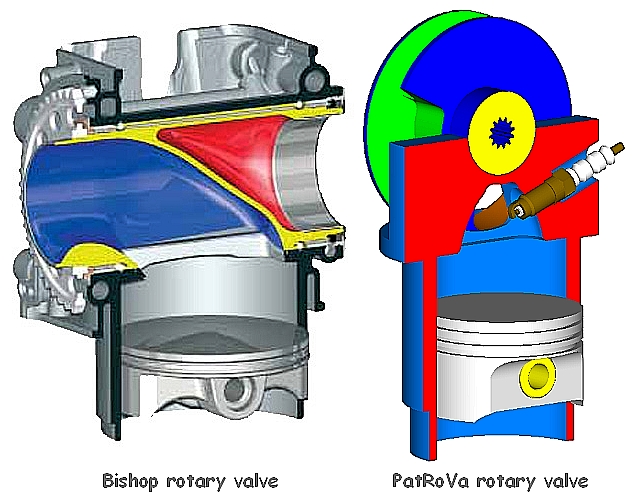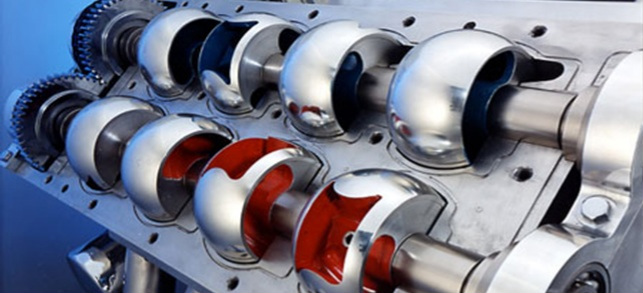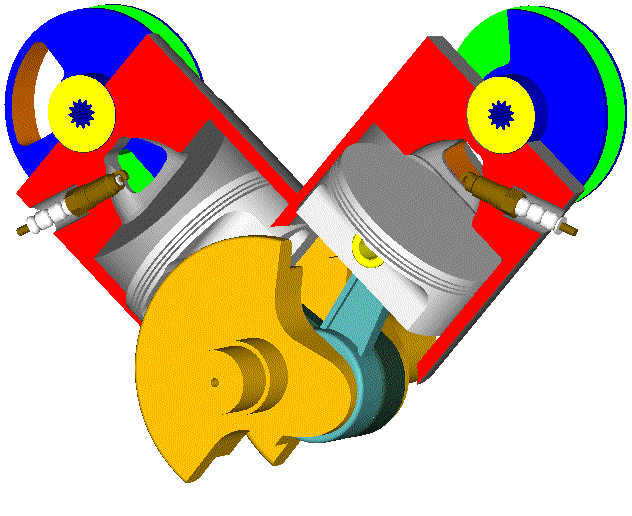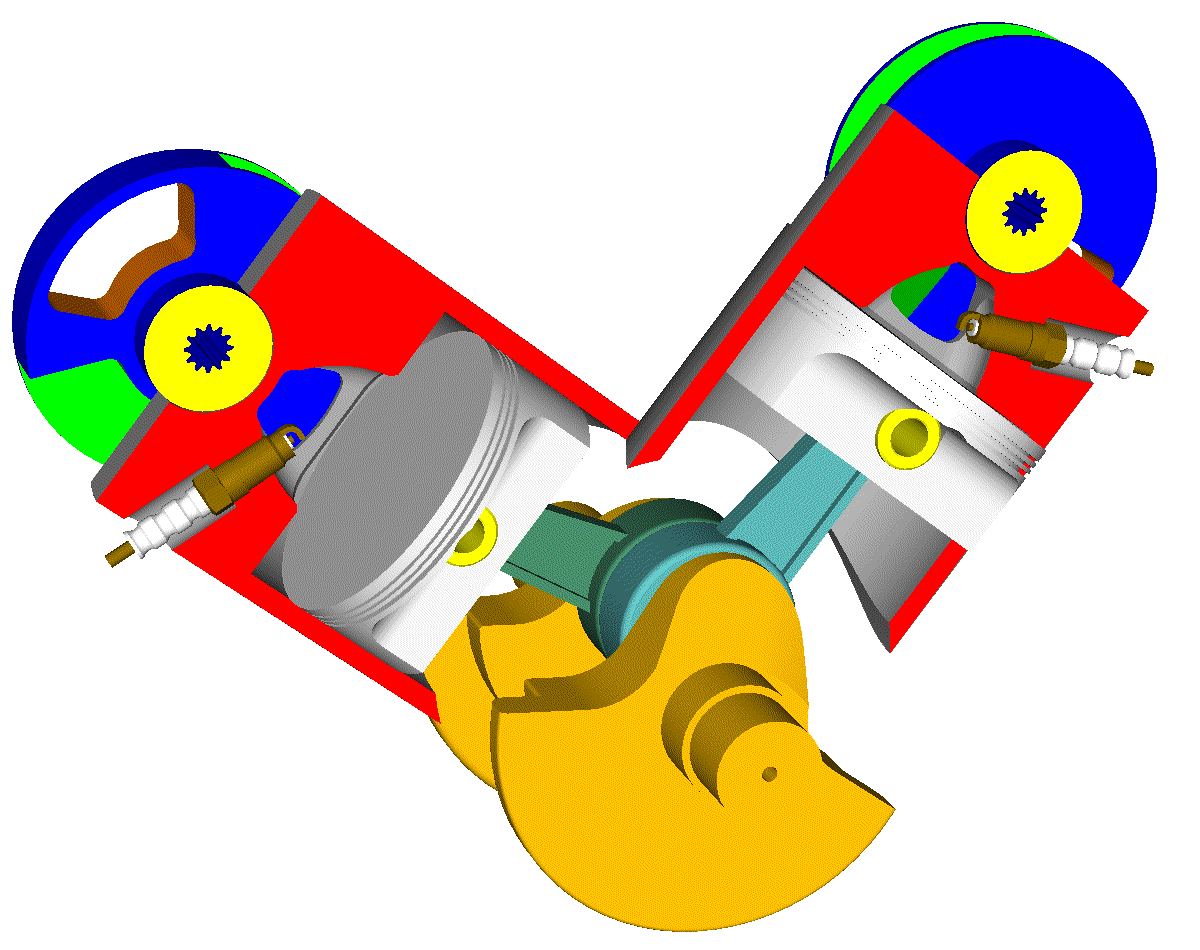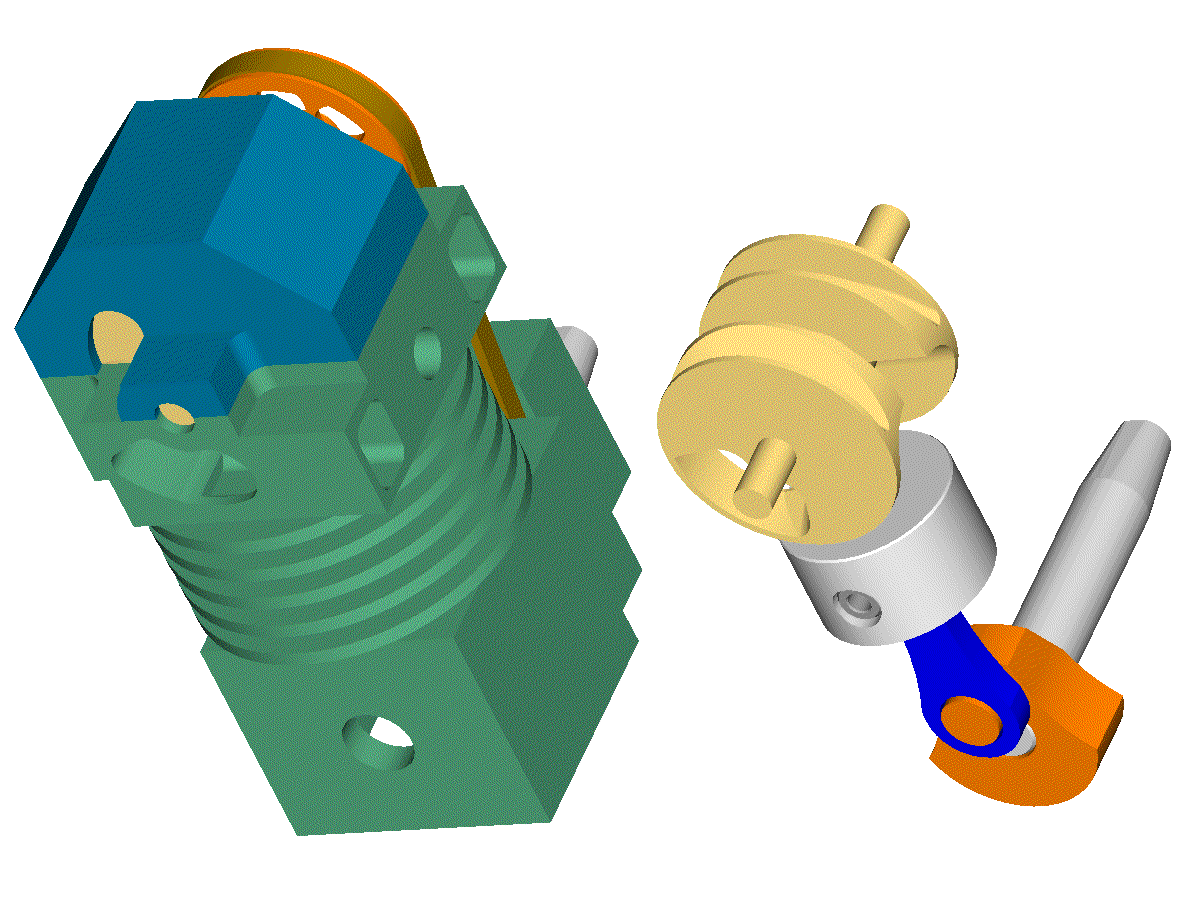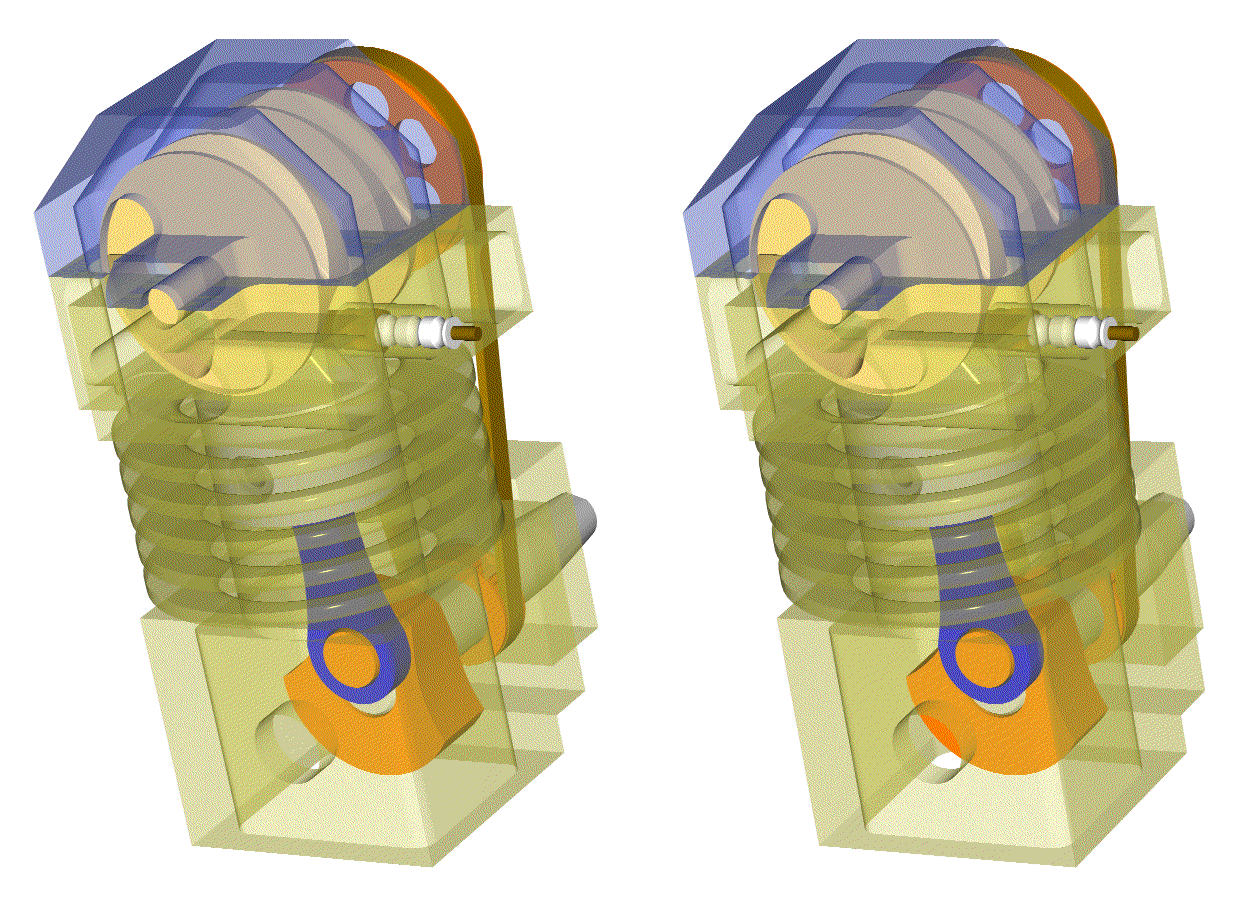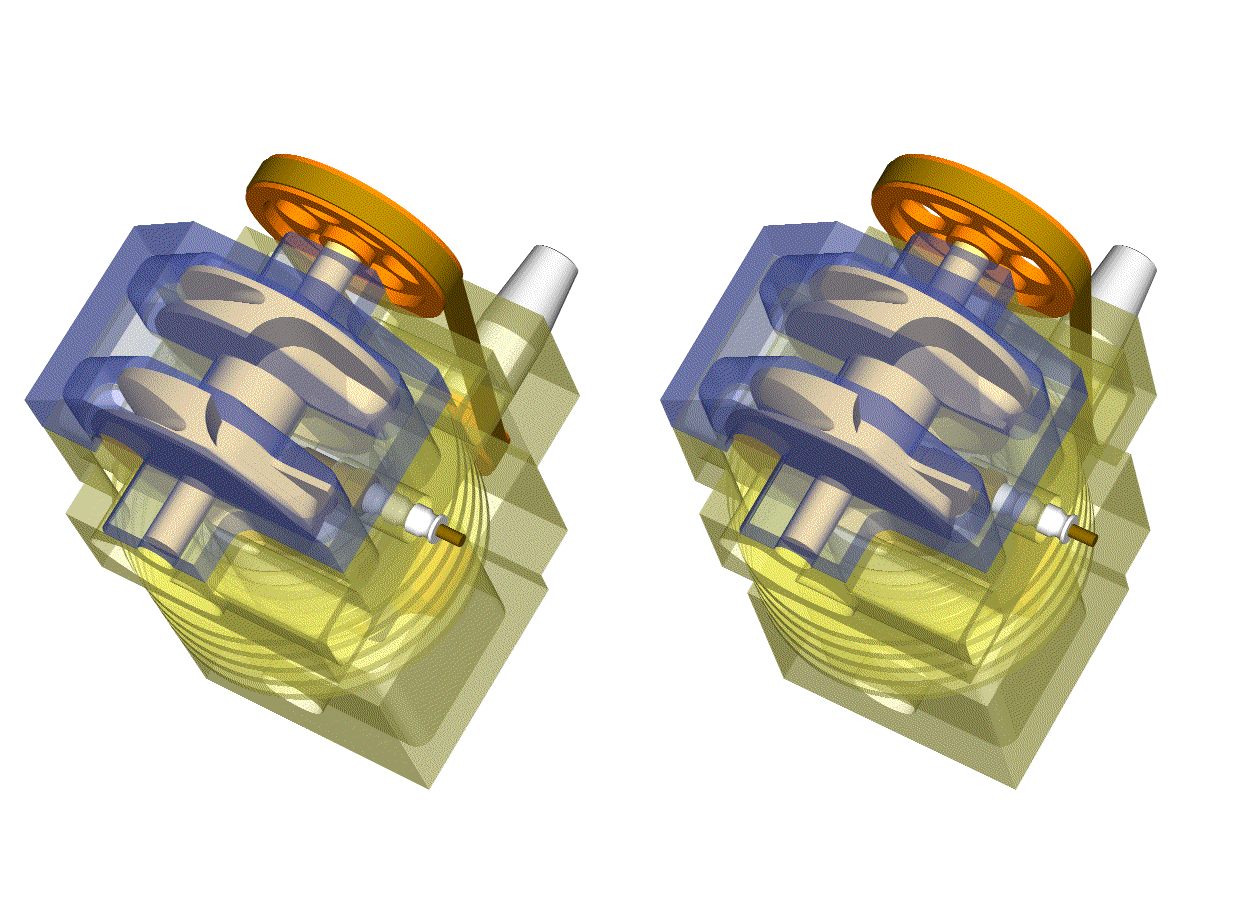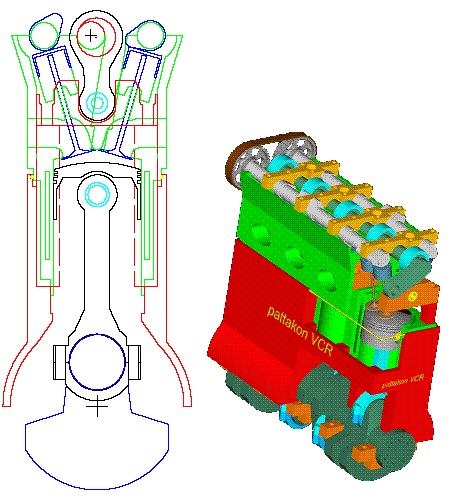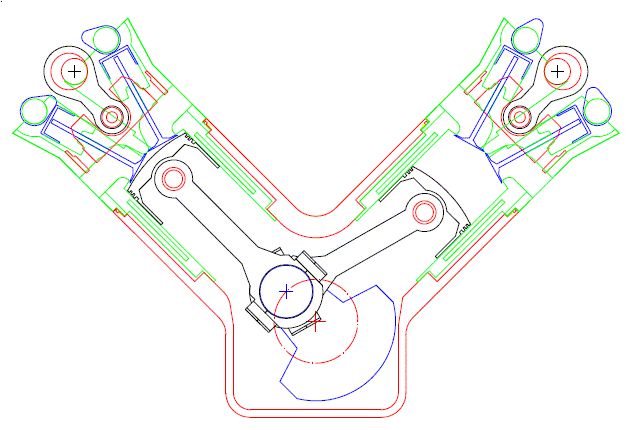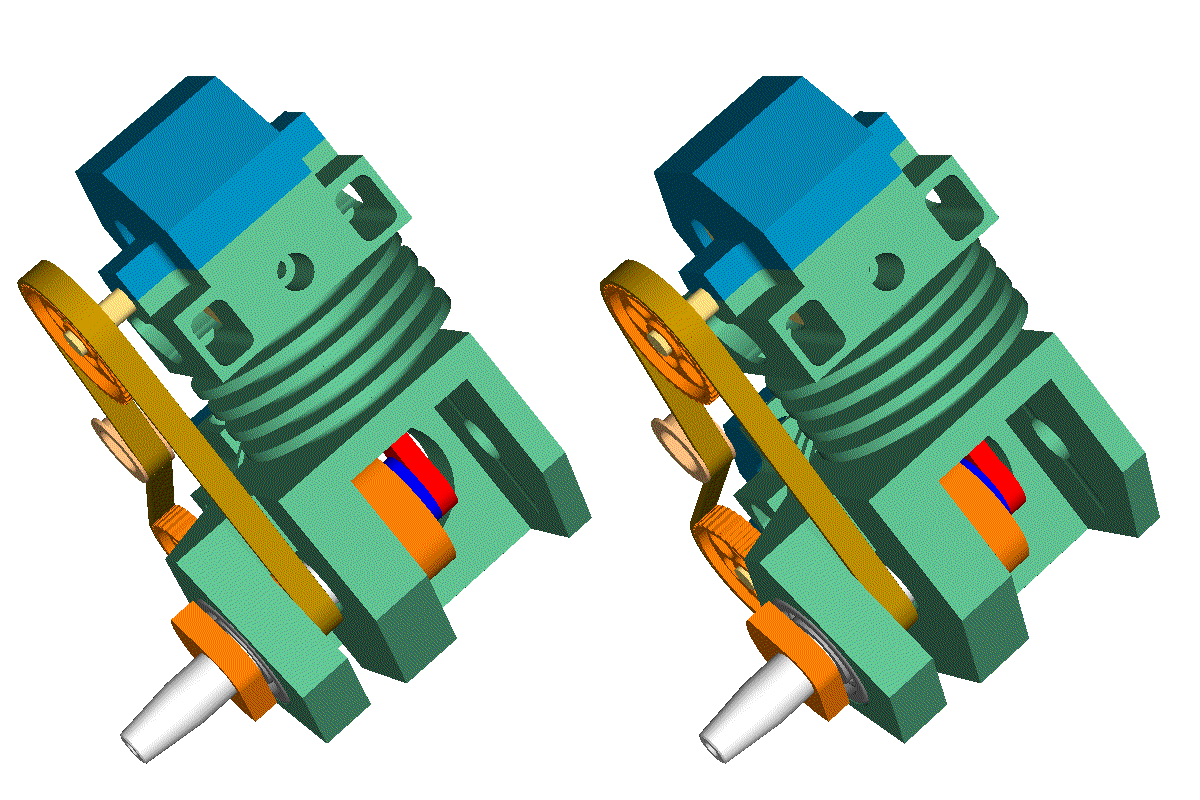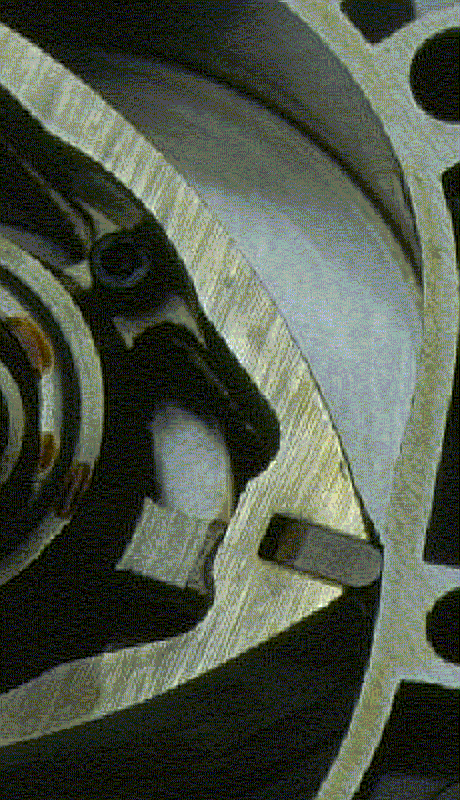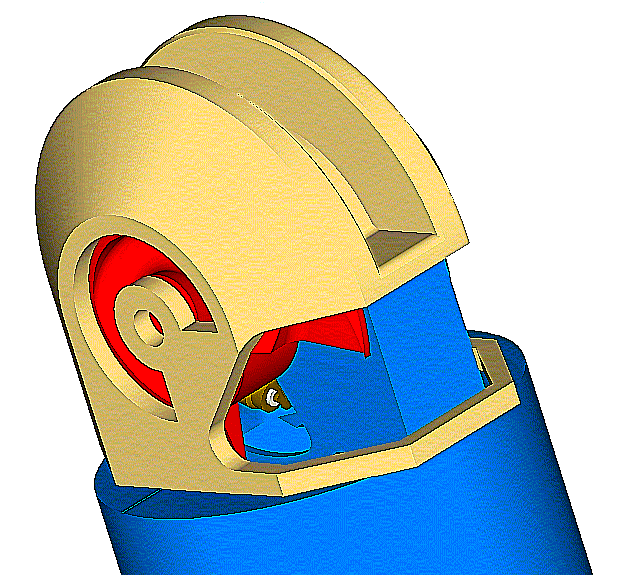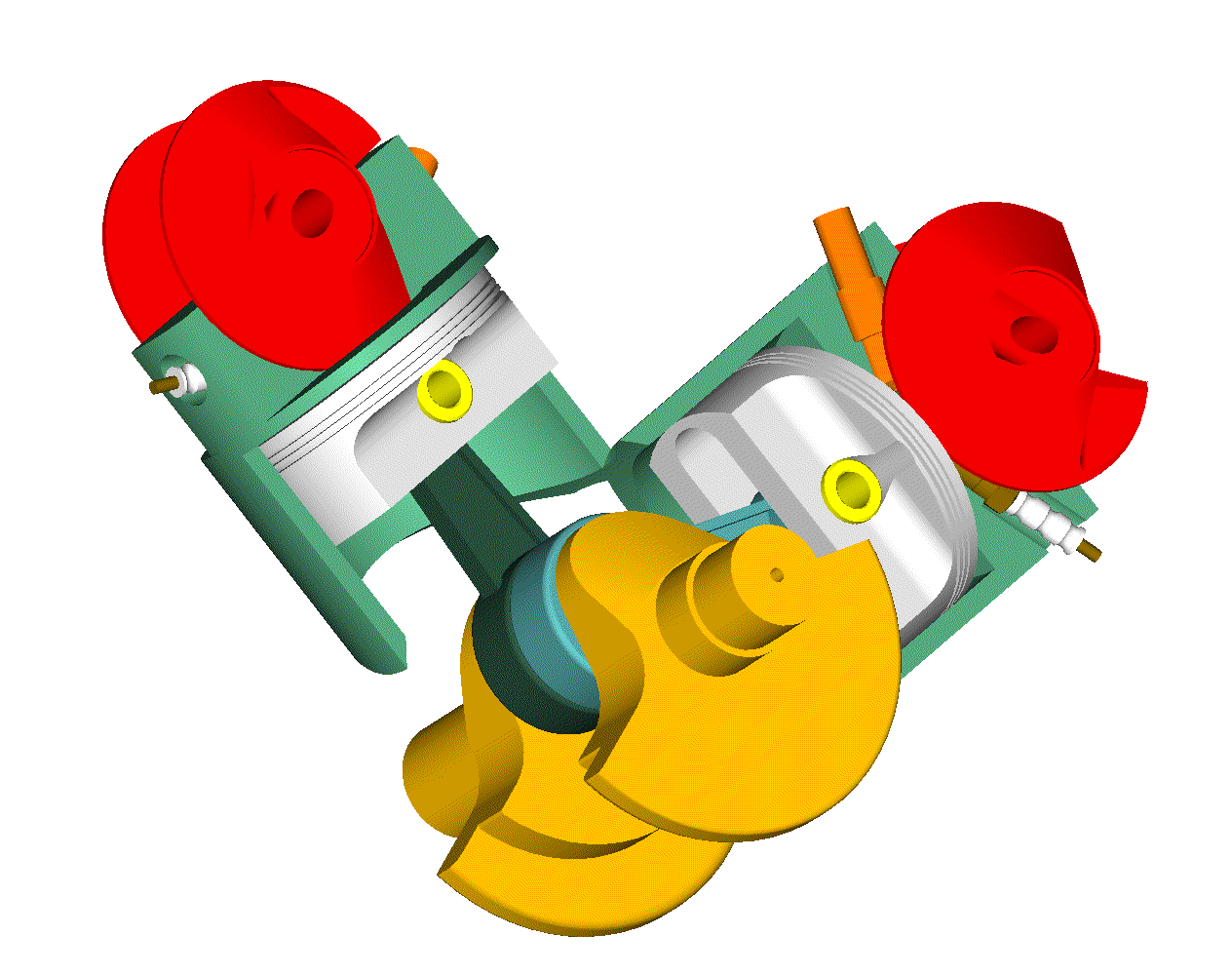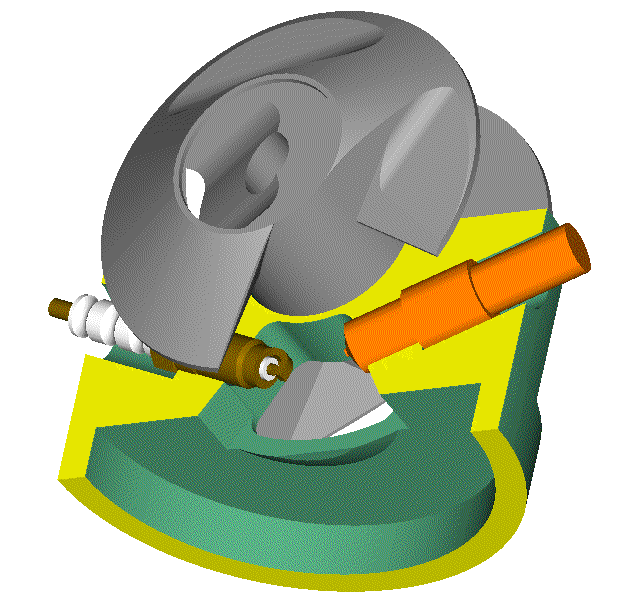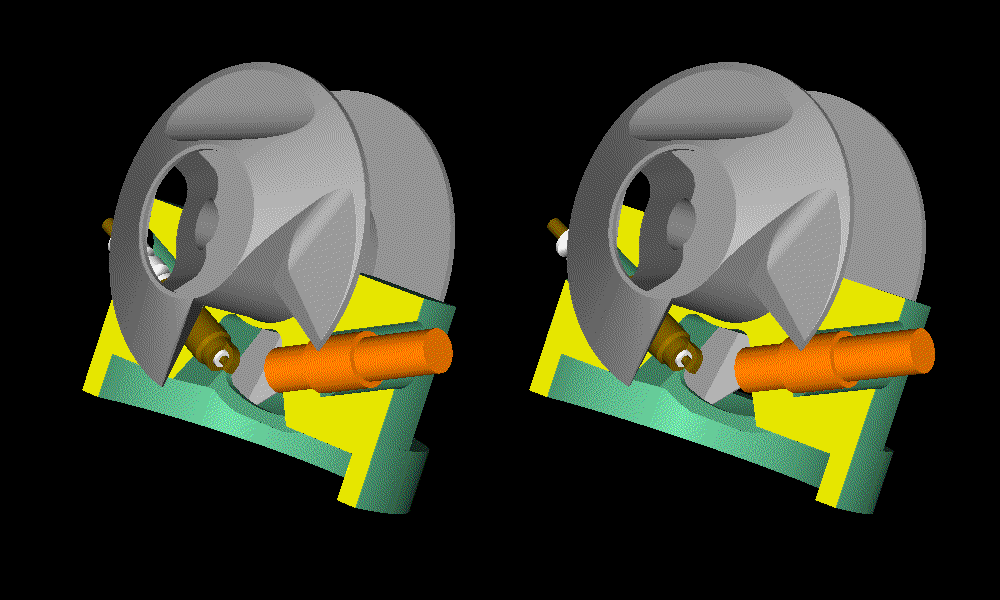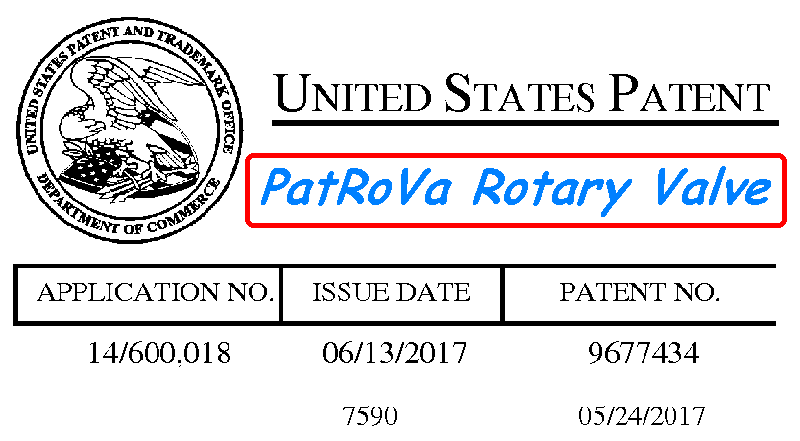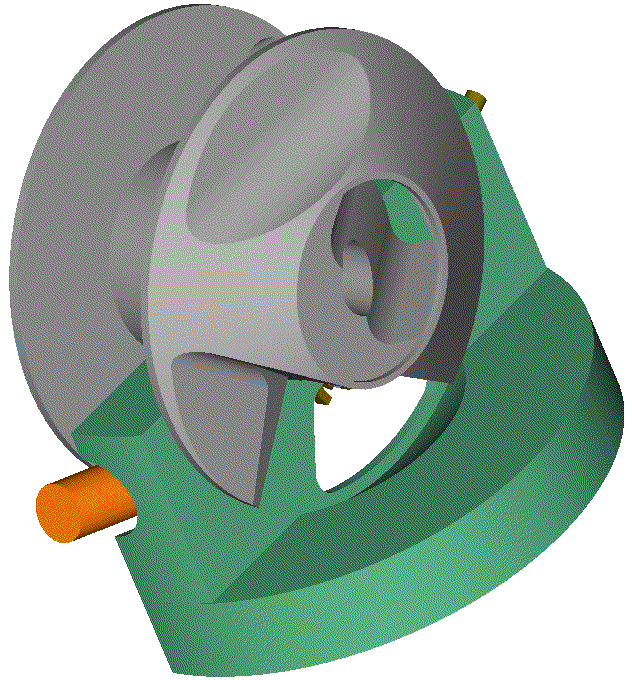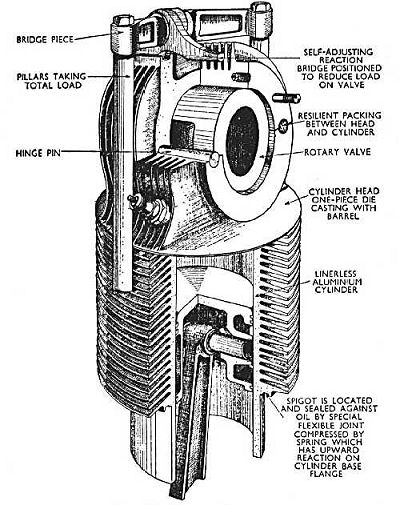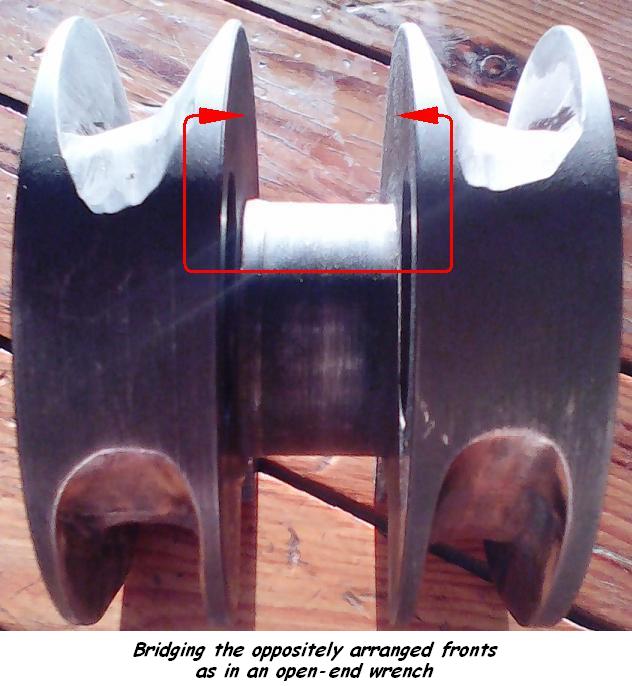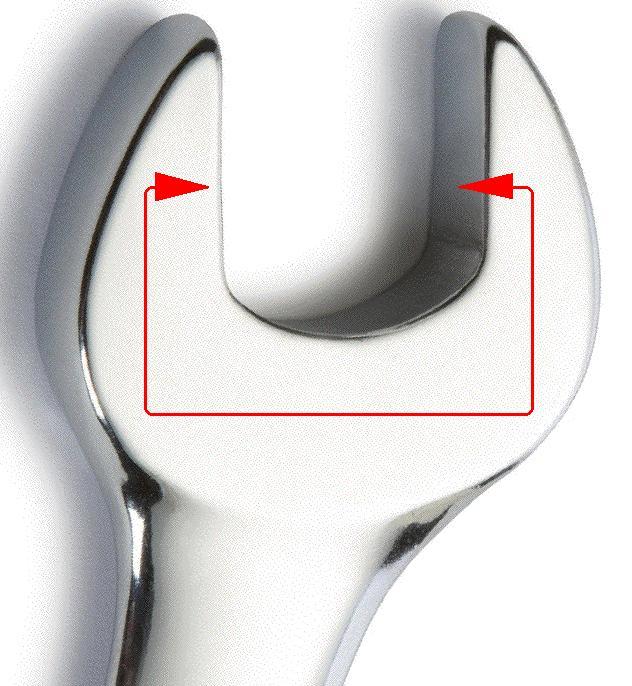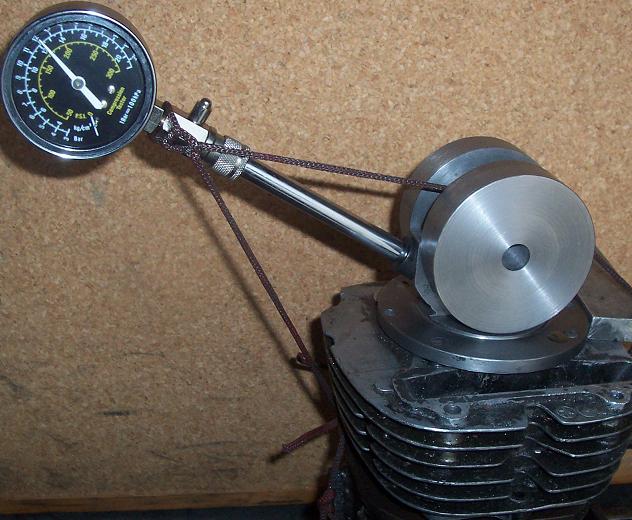Hello all.
For top specific power, a sport motorcycle engine needs to operate
reliably at extreme revs; it also needs extremely oversquare design;
it also needs big diameter valves, high valve lifts and aggressive
valve lift profiles.
Did you ever think how the acceleration and the inertia loads in the
valve train compare with those of the piston?
Quote from the HMEM forum regarding the differences between the loads
in the valve train of a high revving rotary valve engine and of a high
revving conventional poppet valve engine:
“As regards the inertia loads, comparing the PatRoVa rotary valve with
the poppet valve is like comparing the day with the night.
As a piston, the poppet valve accelerates and decelerates in
synchronization with the crankshaft.
During, say, 240 crank degrees the poppet valve opens and closes
(frequency: 1.5 of the crankshaft frequency).
Its restoring spring has to be strong enough to accelerate the poppet
valve to close following the ramp of the camshaft.
In the Ducati Panigale 1299, the intake valve lift is 16mm for a
piston stroke of 60.8mm. This means that the acceleration of the valve
is (1.5^2)*(16/60.8 ) =0.59 or 59% of the acceleration of the piston.
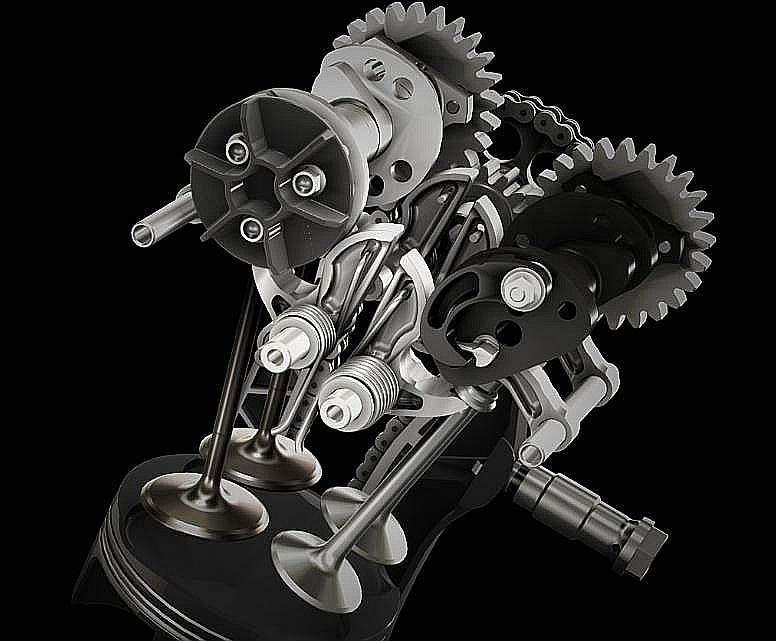
Note: the opening and the closing of the valve is far from being pure
sinusoidal;
the acceleration of the piston, due to the limited length of the
connecting rod, is not sinusoidal , too.
But in the lump sum the acceleration of the valve is more than half of
the acceleration of the piston.
With the intake valve weighing 46.8gr (Ducati Panigalw 1299), the
overall reciprocating “valve mass” is about 100gr (it is the valve
mass plus half of the spring mass, plus a part of the mass of any
linkage like, say, the cam follower).
At 11,500rpm the acceleration of the piston of the Panigale is about
5,600g; according the previous, the acceleration of the inlet poppet
valve of the Panigale is more than 2,800g.
This means that the spring has to be capable to apply a restoring
force of at least 280Kp (about 600lb) to the valve (actually more, for
safety), otherwise the valve cannot follow the cam lobe. This means
that the camlobe has to apply to the valve / valve spring an even
stronger force (necessary for the acceleration of the valve / valve
spring and for the compression of the valve spring) in order the valve
to move as it moves.
For the motion of the conventional poppet valves they are required
extreme forces (which means stress on the parts involved (including
the timing chain or belt), friction, wear, cost etc.)
Ducati solved partially the problem by eliminating the restoring valve
springs (Desmodromic cylinder heads: the valves not only open
positively – as in the conventional valve trains – but they also close
positively, without the need of restoring springs).”
End of Quote.
Interesting?
Quote from the same discussion about the time required for the
combustion in a model (RC) PatRoVa rotary valve engine:
” The Ducati Panigale 1299 has 116mm bore, 60.8mm stroke and runs
reliably till 11,500rpm of the rev limiter.
In the 24.8mm bore x 13mm stroke (6.28cc) PatRoVa model engine (same
bore to stroke ratio with the Ducati):
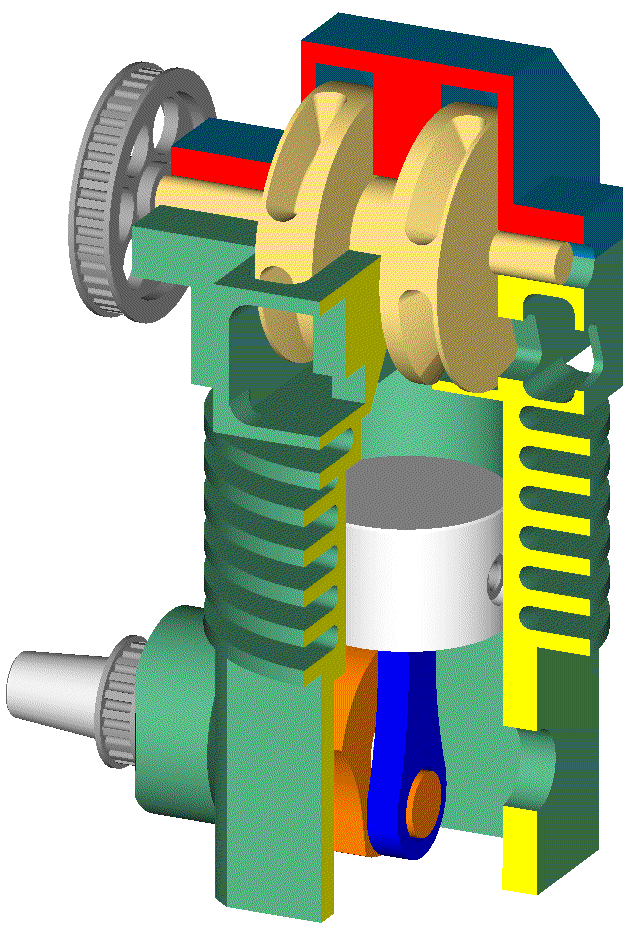
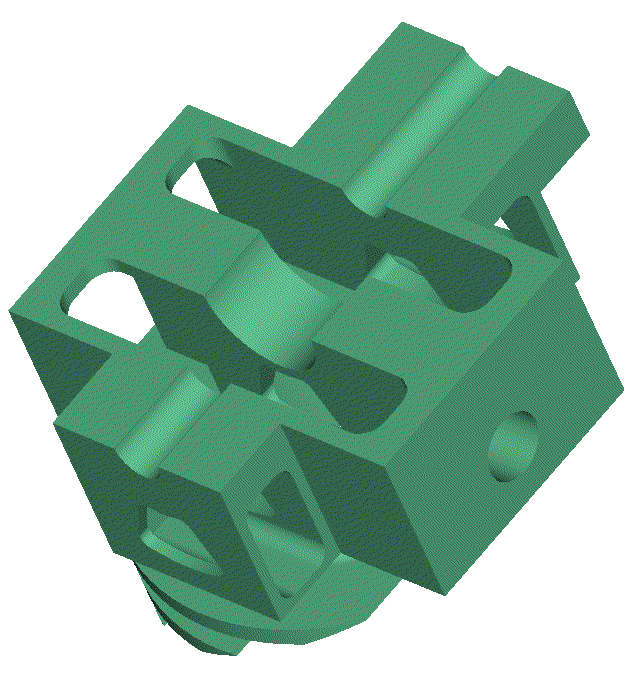
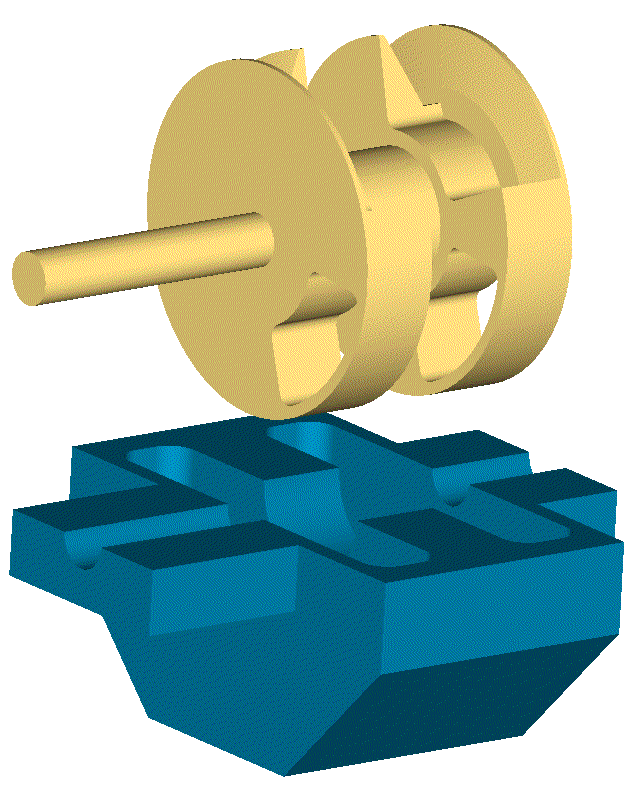
the flame has to travel a 116/24.8=4.7 times smaller distance.
Provided the flame front propagates at the same rate (speed) in the
Panigale 1299 and in the PatRoVa model engine, the second burns the
mixture until at least 11,500*4.7=53,800rpm
Actually, the flame in the Ducati Panigale extends slower than the
flame in the PatRoVa model engine because the shape of the combustion
chamber of the first is not good: it is a thin disk (116mm diameter,
5.24 mm average height for 12.6:1 compression ratio), with deep valve
pockets on the piston crown and necessarily abnormal shape of
combustion chamber walls.
In the one case the flame extends at the two only dimensions (thin
disk), while in the second case, wherein almost all the mixture is
concentrated into the chamber formed between the two disks of the
rotary valve (the clearance between the flat piston crown and the
cylinder head is quite small: the limitation is to avoid the
piston-cylinder head collision at high revs), the flame extends in
three dimensions and proceeds faster with lower thermal loss.
So, as regards the combustion, 50,000rpm is OK for the (above)
oversquare PatRoVa model engine.”
End of Quote.
Objections?
Thanks
Manolis Pattakos
Edited by manolis, 27 July 2016 - 17:46.



